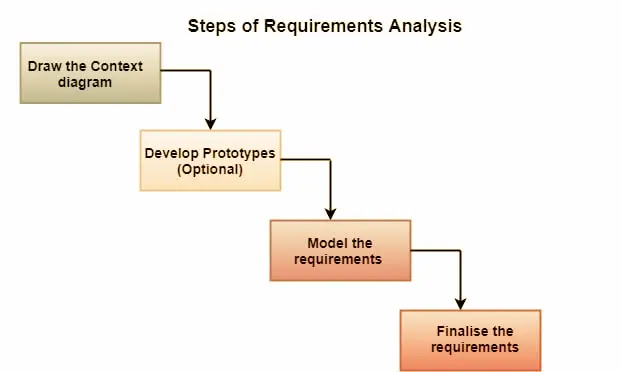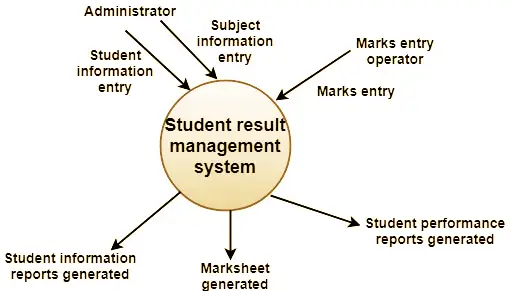What is Requirement Analysis?
Requirements analysis is a critical phase in software engineering that lays the foundation for the entire software development process. It involves identifying, documenting, analyzing, and prioritizing the requirements of the system to be developed. In this phase, software engineers work closely with stakeholders, including end-users, business owners, and project managers, to understand their needs and expectations for the software.
The requirements gathered during the analysis phase serve as a blueprint for designing, developing, testing, and maintaining the software. Therefore, effective requirements analysis is essential to ensure that the software meets its intended purpose and satisfies the needs of all stakeholders.
Steps of Requirement Analysis

Draw the Context Diagram – Creating a context diagram is a crucial step in system design that helps to clearly define the scope and interfaces of the proposed system with its external environment. By identifying the entities outside the system that interact with it, the context diagram serves as a simple yet effective model to establish the boundaries of the system.

For instance, in the case of a student result management system, the context diagram provides a visual representation of the relationships between the system and the external entities, such as students, teachers, and administrators, that interact with it. This helps to ensure that the system is designed to meet the needs and requirements of all its stakeholders.
Development of a Prototype – In software development, constructing a prototype can be a valuable technique to uncover and address customer needs. By creating a model that emulates a component of the proposed system, developers can solicit feedback from the customer, make changes to the prototype iteratively, and improve their understanding of the system’s requirements. When uncertainties arise in the development process, a prototype can facilitate decision-making between the parties involved.
If the project is aimed at the general market, it can be advantageous to showcase the prototype to a representative group of potential customers. Although the individuals who evaluate the prototype may not become actual customers, their input can help developers enhance the product’s appeal and address any usability concerns.
Since the primary objective of the prototype is to obtain feedback rapidly and at a low cost, it may have some limitations and may not be suitable for integration into the final system. Thus, the decision to create a prototype is optional in the development process.
Model the Requirements – To model the requirements effectively, software engineers typically use a variety of graphical representations, including but not limited to the Data Flow diagram, Entity-Relationship diagram, Data Dictionaries, and State-transition diagrams. These models provide visual depictions of functions, data entities, external entities, and their interrelationships, which can help to identify any erroneous, inconsistent, missing, or unnecessary requirements. By using these graphical views, software engineers can create a more comprehensive and accurate representation of the system requirements, making it easier to develop software that meets the needs of stakeholders.
Finalize the Requirements – Once the system requirements have been modeled and analyzed, software engineers will have a more comprehensive understanding of the system’s behavior, and any inconsistencies or ambiguities will have been resolved. Additionally, they will have analyzed the flow of data among different system modules and gained greater insight into the system through elicitation and analysis activities. With this enhanced understanding of the requirements, the next step is to finalize and document them in a prescribed format. By documenting the requirements, software engineers can establish a clear and comprehensive understanding of the system’s needs, ensuring that the resulting software is developed to meet the expectations of stakeholders.
This article about Requirements Analysis in Software Engineering will help the candidates who are here to know about it. Follow our @ tutorials.freshersnow.com for more useful articles.
